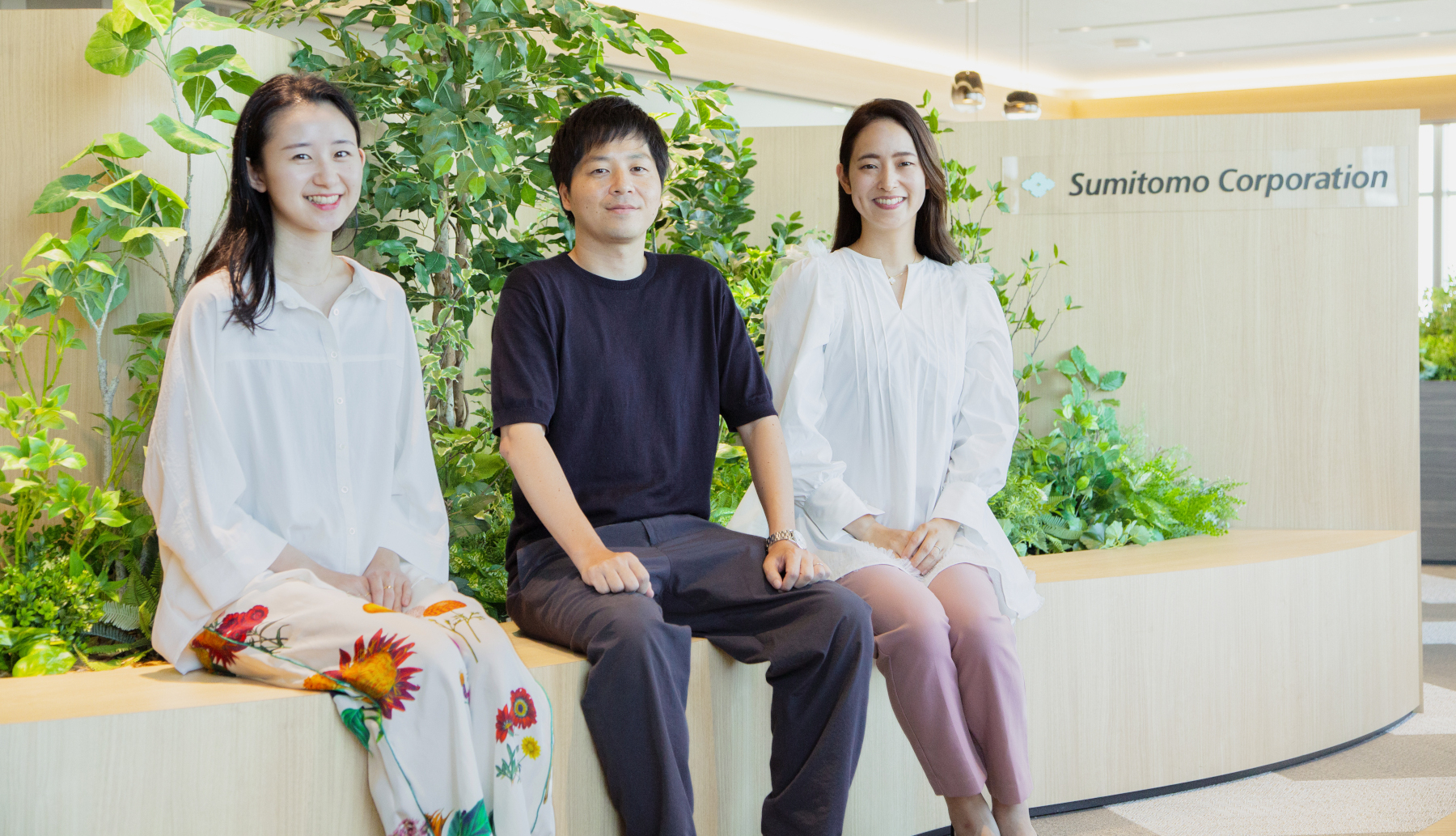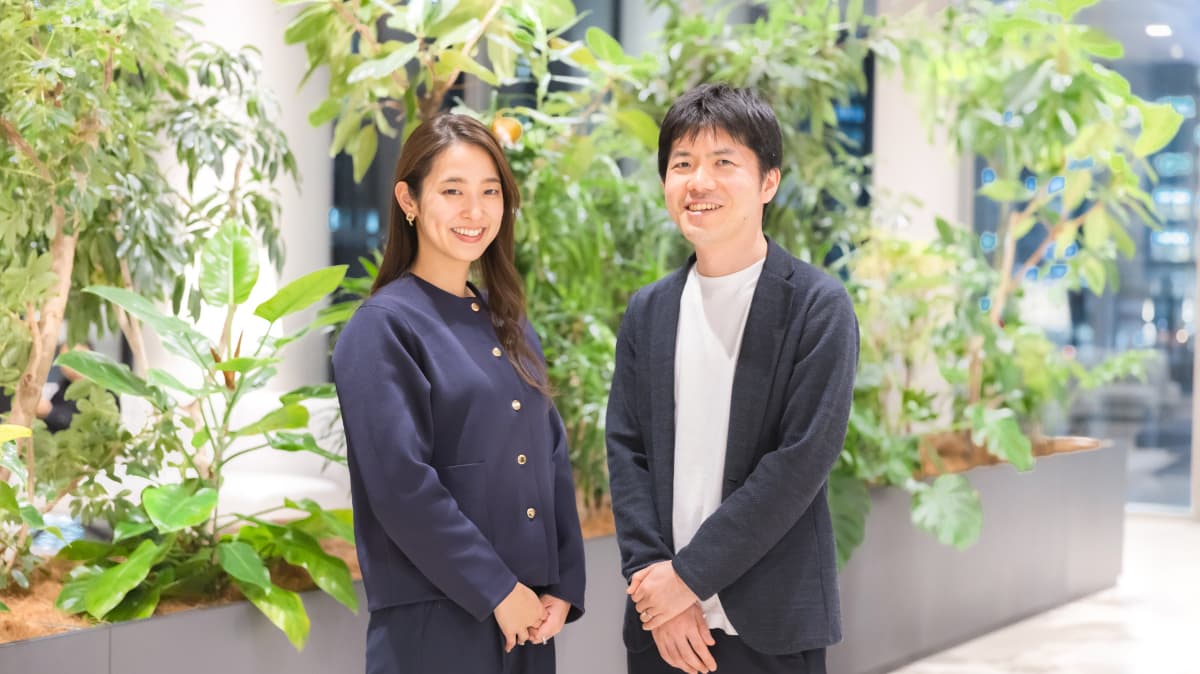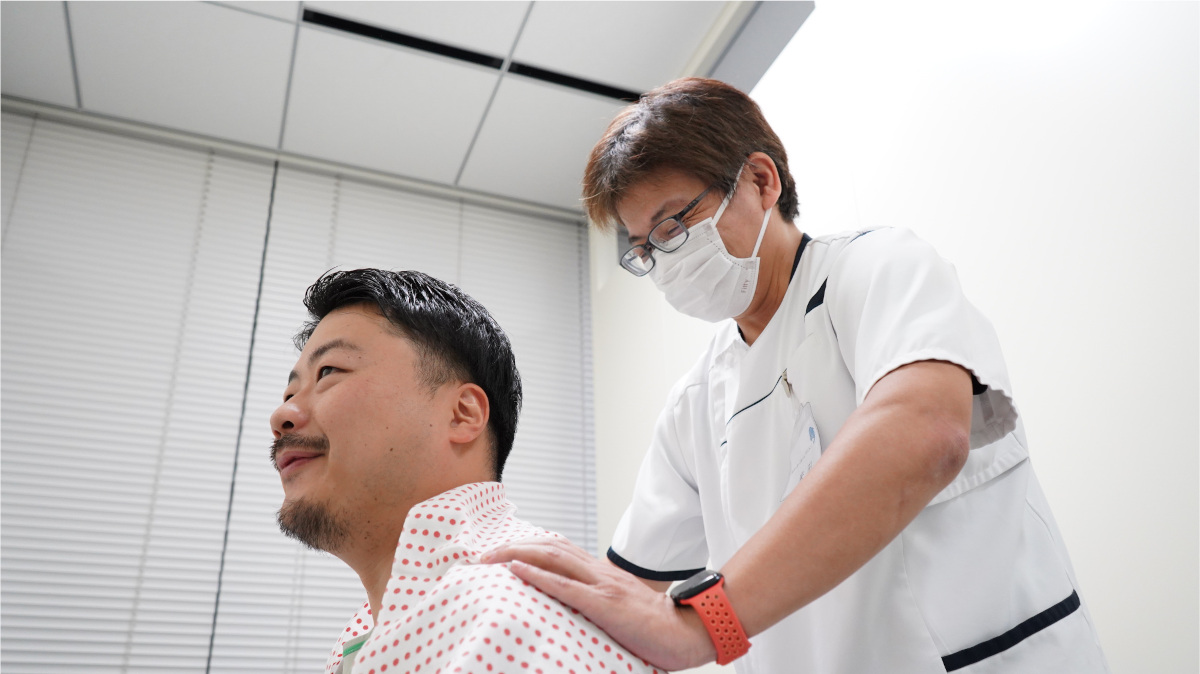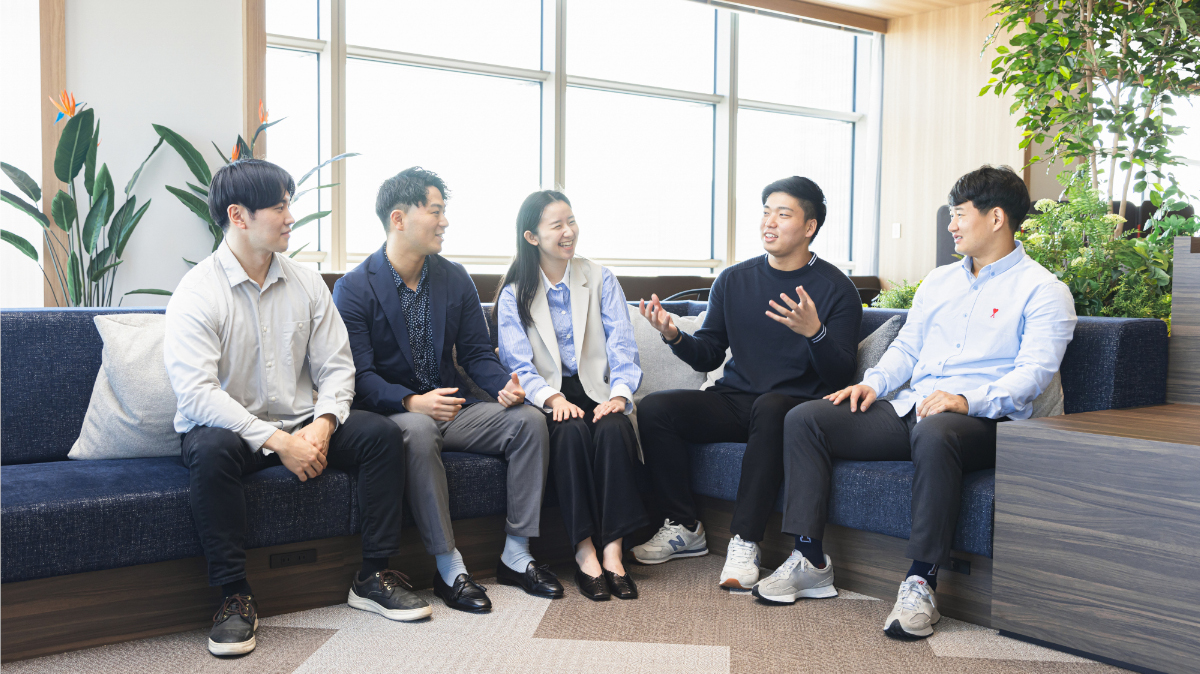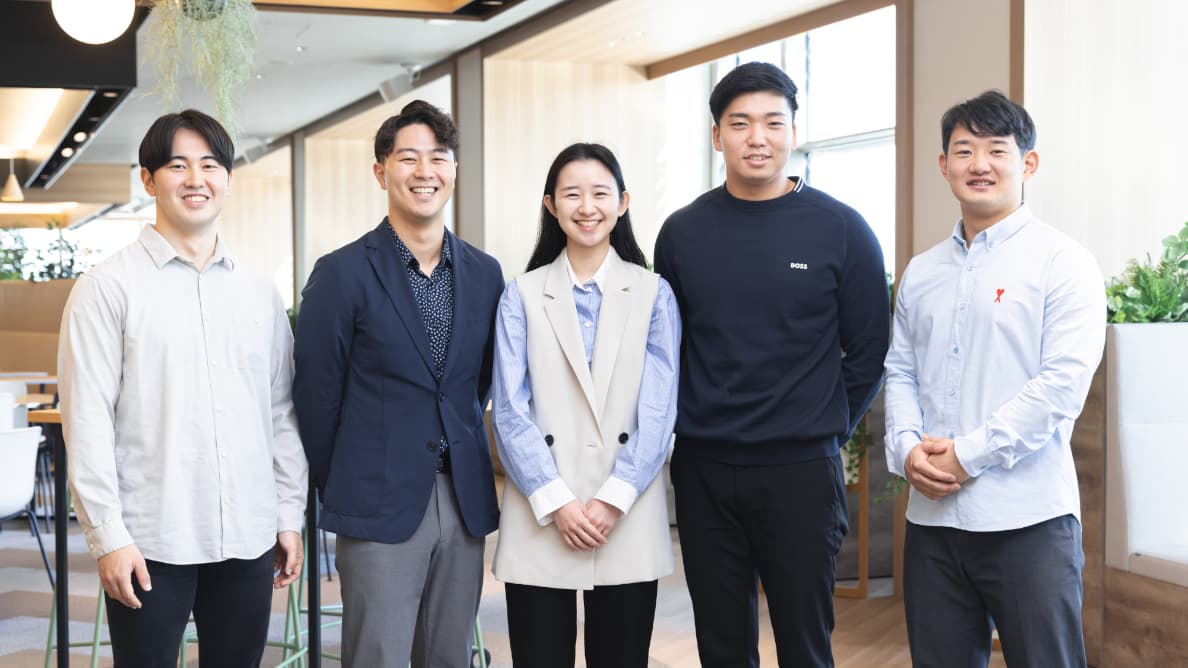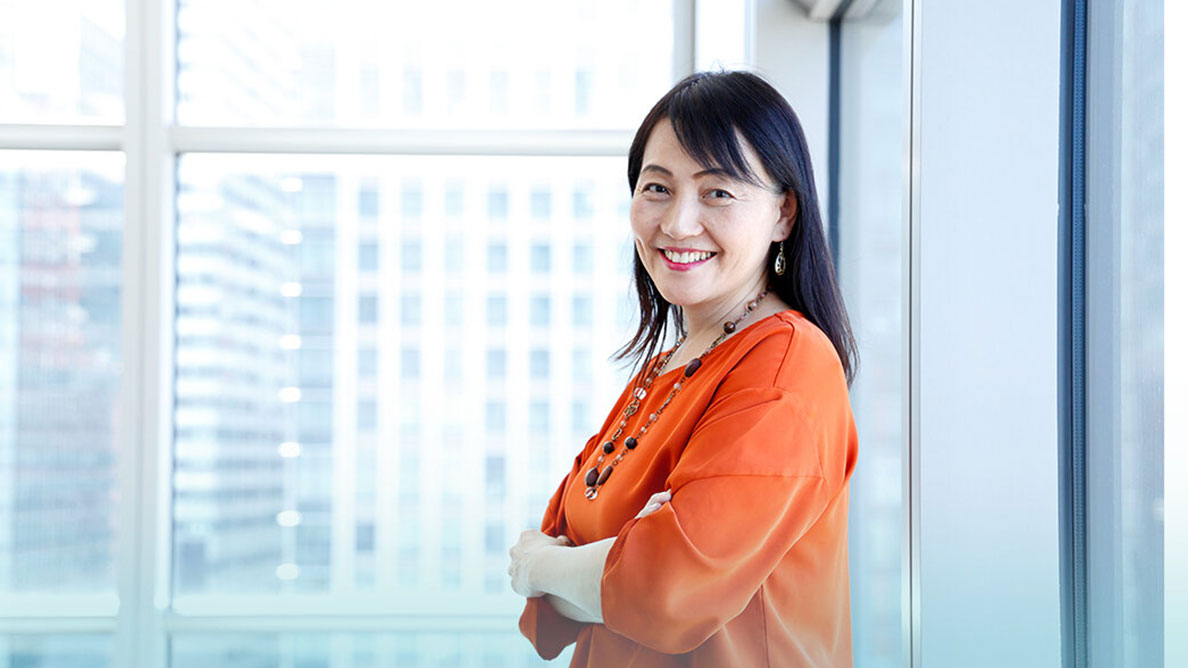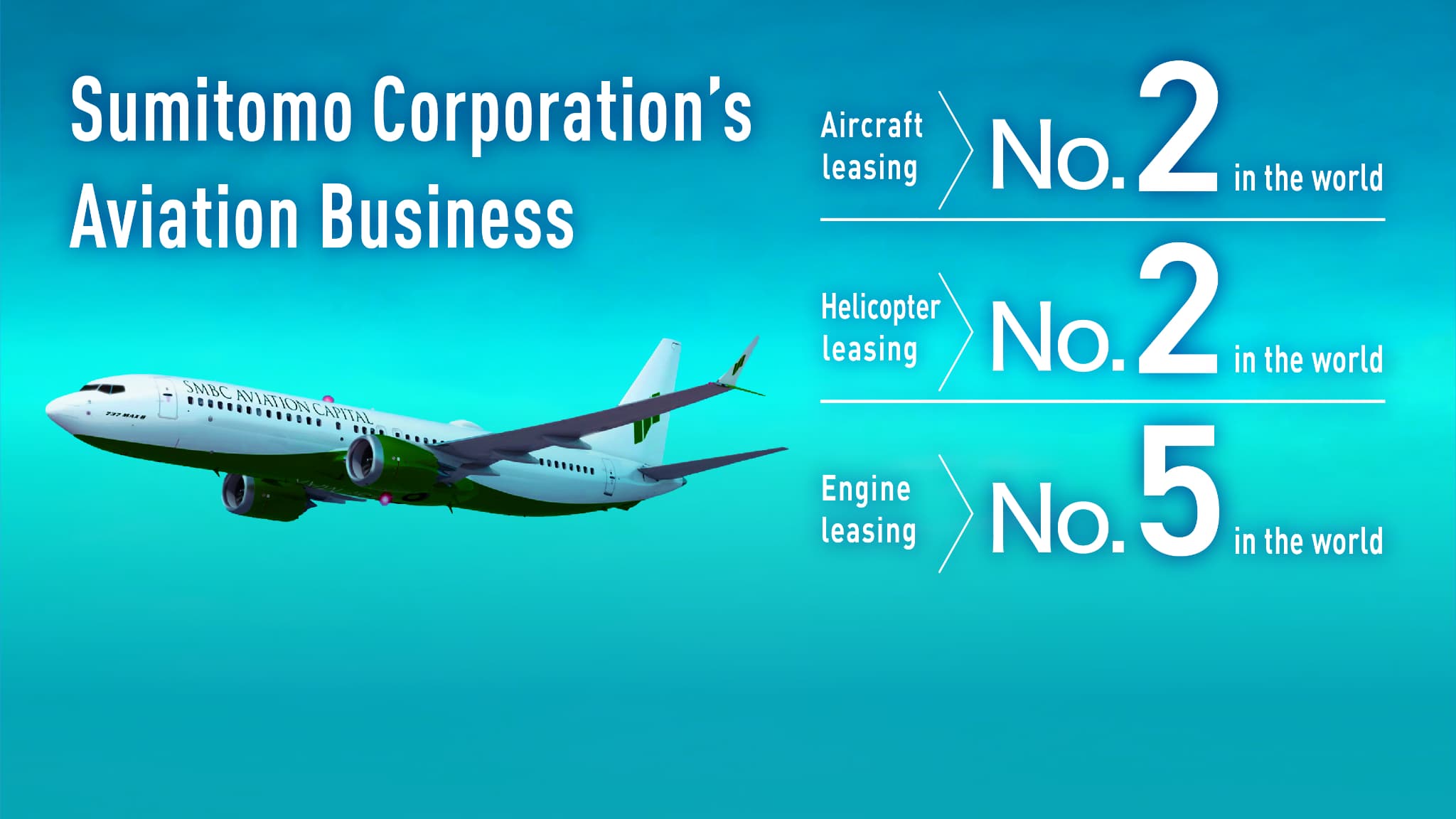
- TOP
- Enriching+TOP
- HR Answers 10 Frequently Asked Questions About Work Styles (Part One): "How is Teleworking System Used?" "How About Overseas Assignments?" and More
2025.10.17
Culture
HR Answers 10 Frequently Asked Questions About Work Styles (Part One): "How is Teleworking System Used?" "How About Overseas Assignments?" and More

As work styles continue to evolve, some may wonder, “Which companies are making efforts to offer flexible ways of working?" At Sumitomo Corporation, we provide comprehensive systems and environments to enable each employee to work in a way that suits their situation in life. To shed some light on the subject, we spoke with two HR representatives responsible for both new graduate and mid-career recruitment, who answered 10 frequently asked questions, including "How is teleworking system used?" "What is the rate of maternity/childcare leave uptake?" "How do we support employees raising children while working?" and more.
This article is part one of a two-part series. Part two can be found here:
-

Talent Acquisition Team,
HR Strategy DepartmentYuna Ohkura
Ohkura joined Sumitomo Corporation as a new graduate in 2019. After joining, she was involved with many HR activities as a HR officer for the Media & Digital and Lifestyle Groups. From FY2024, she transferred to her current team, overseeing mid-career recruitment and the internal job posting system.
-

Talent Acquisition Team,
HR Strategy DepartmentNene Takagi
Takagi joined Sumitomo Corporation as a new graduate in 2024. Since joining, she has been responsible for new graduate recruitment. In addition to managing the recruitment process, she oversees work-experience internship and selection for full-degree overseas university students, among other responsibilities.

Q1. What kind of work style is Sumitomo Corporation aiming for?

Ohkura At Sumitomo Corporation, we value face-to-face communication while maximizing organizational performance through a balanced combination of in-office work and teleworking – what we call the "best-mix of work style." We provide various internal systems to help each employee manage their work and life in a self-disciplined way, enabling strong performance.
Q2. How commonly are teleworking and flex-time systems used?
Takagi I think the teleworking system is well utilized. Employees can work from home (new graduates are eligible from their second year) up to a set maximum number of days. In FY2024, the annual average office attendance rate was about 70%. I personally use this system when working on tasks that require concentration and focus. Not having to commute creates more time, allowing me to focus on my work in a quiet environment at home – a major benefit.


Ohkura Our "super flexible work hours system", without core hours (mandatory office hours in a flextime system), is rather unusual. I also use it depending on my work situation. It allows flexibility for personal events or hobbies during weekdays, balancing life overall and, as a result, improving focus and performance at work.
Takagi There was a senior colleague with children who effectively combined these two systems. They go to the office in the morning, leave in the evening to pick up their children and resume work at home after spending some time with family. This perfectly exemplifies our "best-mix of work style."
Q3. How common is overtime?
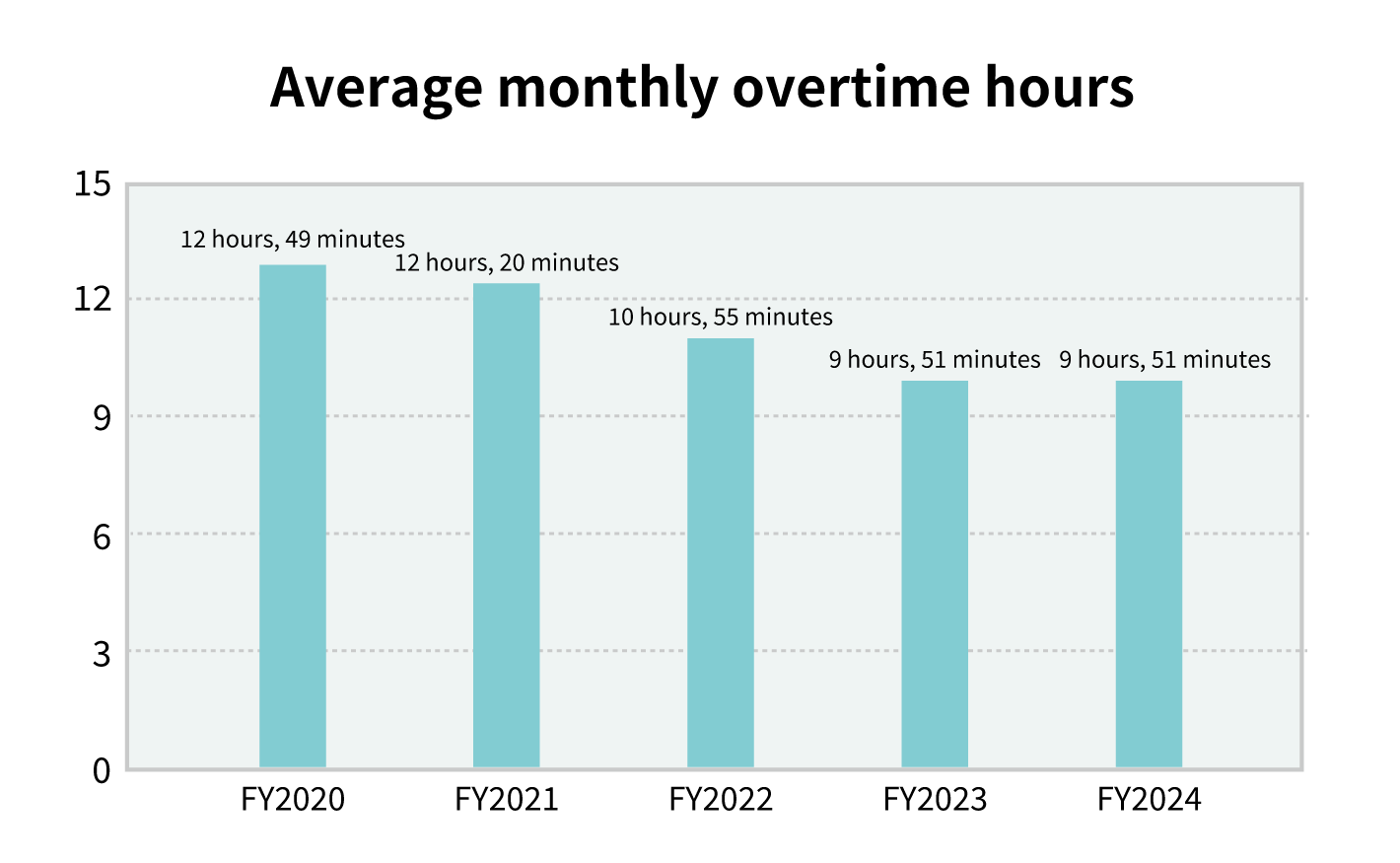
Takagi Company-wide monthly overtime beyond statutory working hours (8 hours/day, 40 hours/week) averages 9 hours and 51 minutes (FY2024). This is just an average; it varies by department, duties and time of year. For me, during months with recruitment events or project peaks, overtime can reach 60–70 hours. But some months are almost zero, allowing for a well-paced work rhythm.
Q4. How much vacation do employees take?
Ohkura Employees are granted 20 days of paid leave annually (excluding mid-year hires). In FY2024, the company-wide paid leave utilization rate was 70.6% (14.1 days on average). Other leave programs include: "Volunteer Leave" for non-profit social contribution activities, "Refresh Leave" based on length of service, marriage leave and bereavement leave – we have a comprehensive paid leave system.
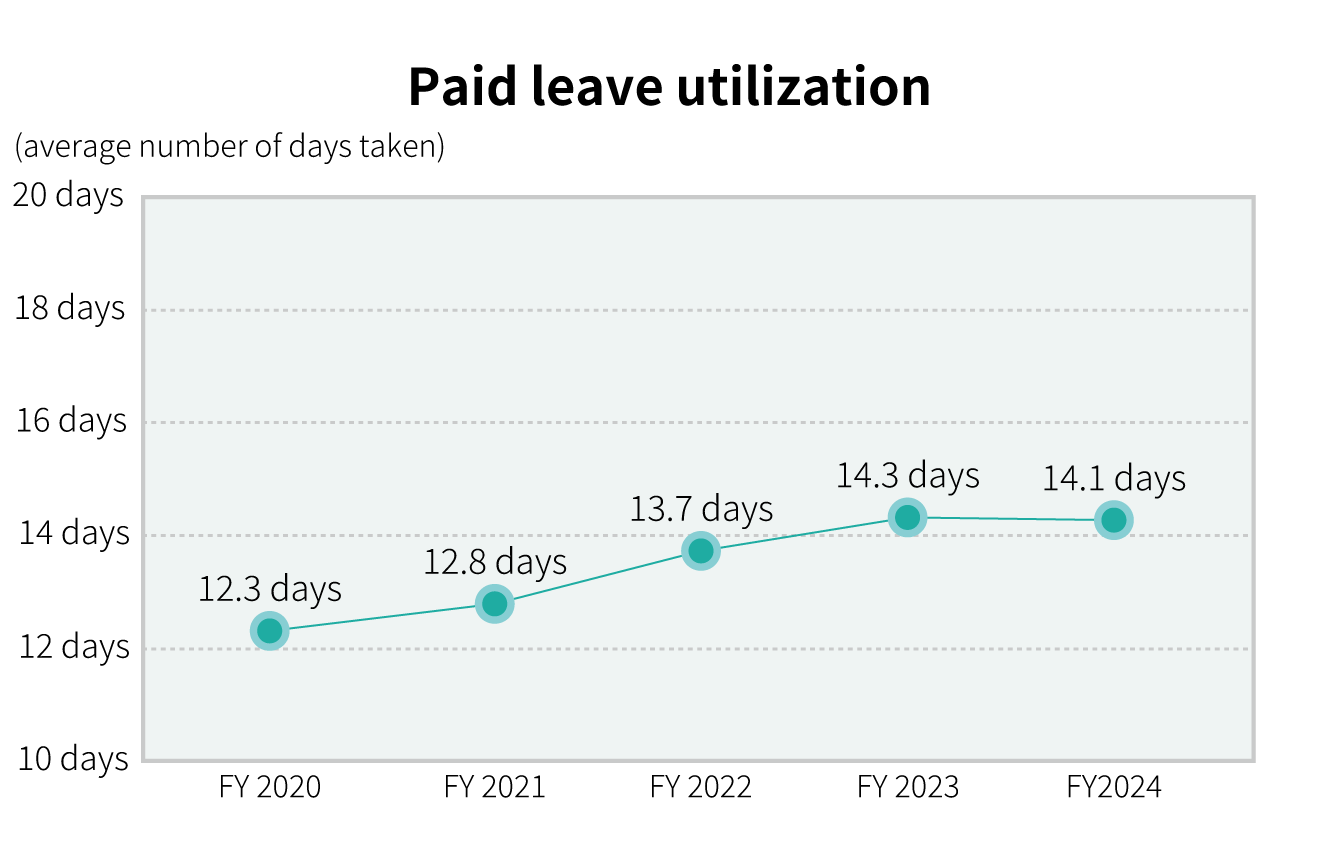

Takagi Many employees combine long holidays like Obon (a traditional Japanese summer holiday) and New Year with paid leave for extended vacations abroad. Taking five consecutive days of paid leave, unrelated to long holidays, is also common. I plan to take time off this fall to travel to Europe!
Q5. How many employees work overseas?
Ohkura Of approximately 5,000 employees, about 20% (946) are stationed overseas as expatriates or trainees *1 across 70 countries and regions (as of August 2025). The numbers by region are as detailed below.
*1 As a global business group, Sumitomo Corporation offers diverse trainee programs for employees to gain global experience. Examples include "Trainees" gaining experience at overseas offices/businesses to develop globally capable personnel, "Language Trainees" training as language and regional specialists, and "Trainees Studying Abroad" pursuing MBA or other programs.
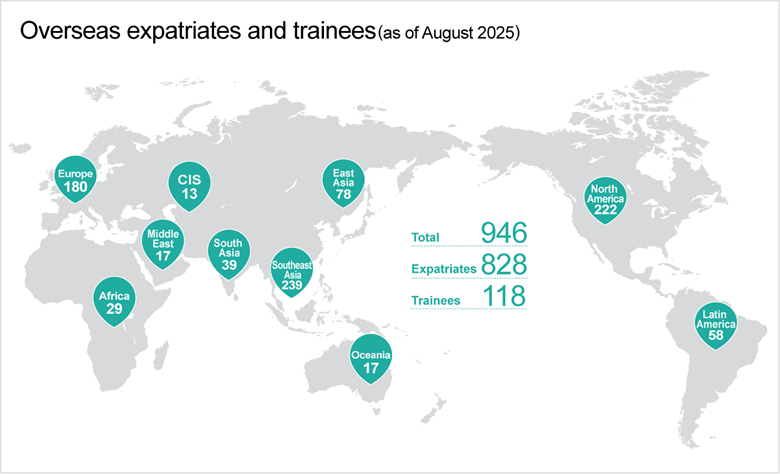
Takagi Many first-year employees are assigned long overseas business trips of more than a month. Young employees quickly gain experience working in a global environment. I'm looking forward to my first overseas business trip this fall.
Ohkura Overseas assignments are determined based on organizational and business needs, as well as employee skills and career aspirations. Some employees use the overseas trainee program in their second year after joining. By the tenth year, 73% of employees (89 out of 122) have had overseas experience – so opportunities are plentiful.


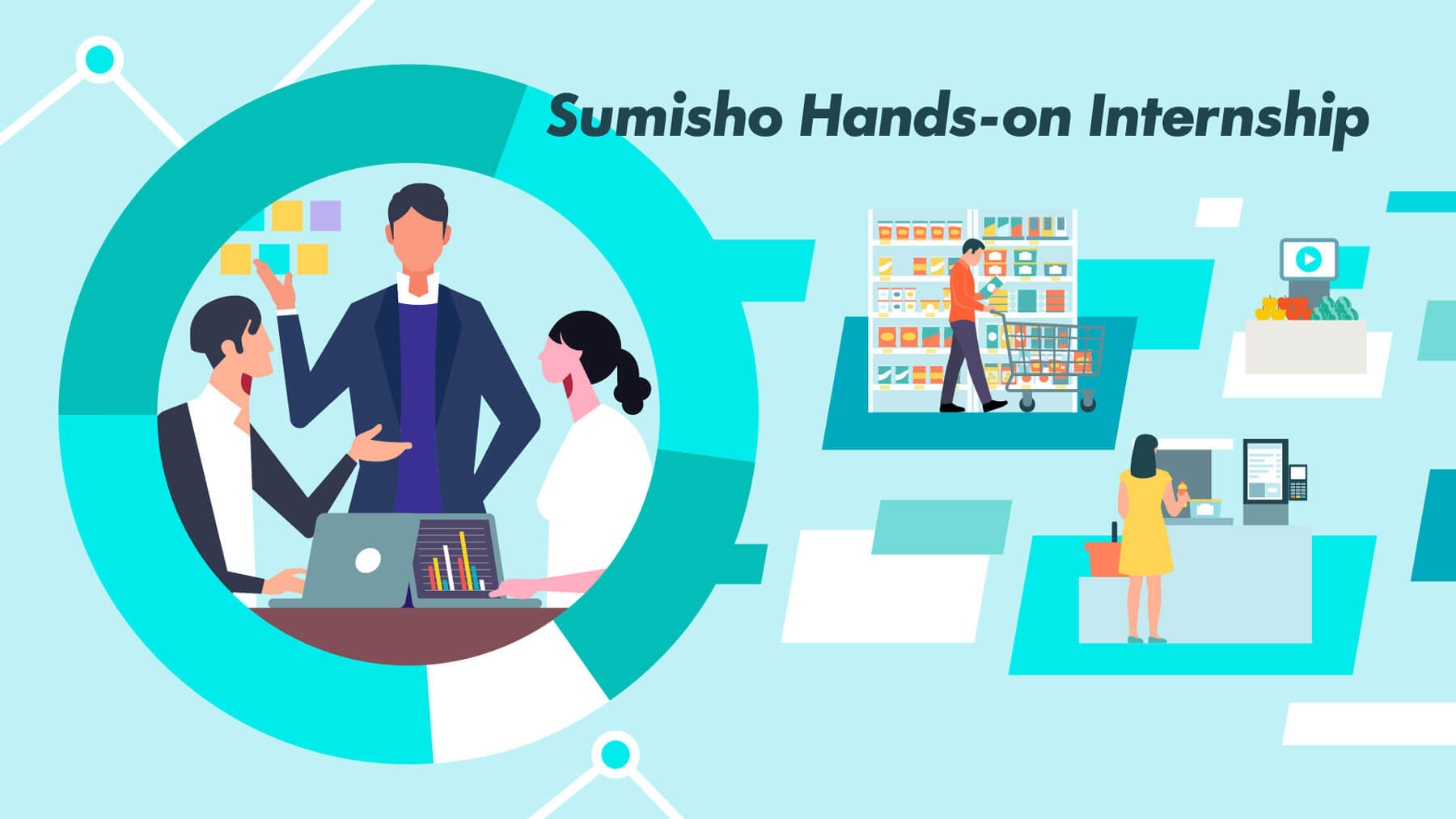




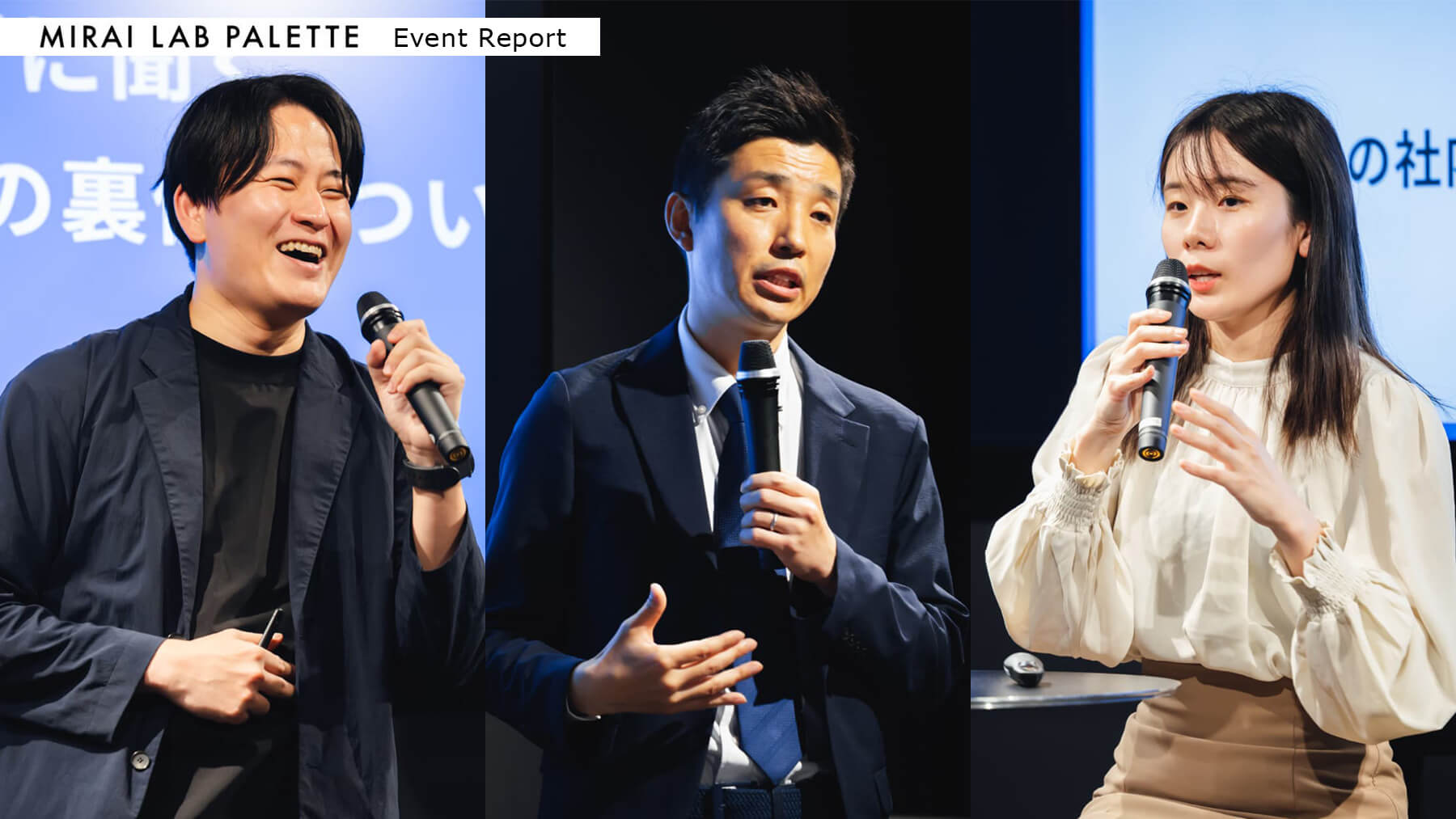


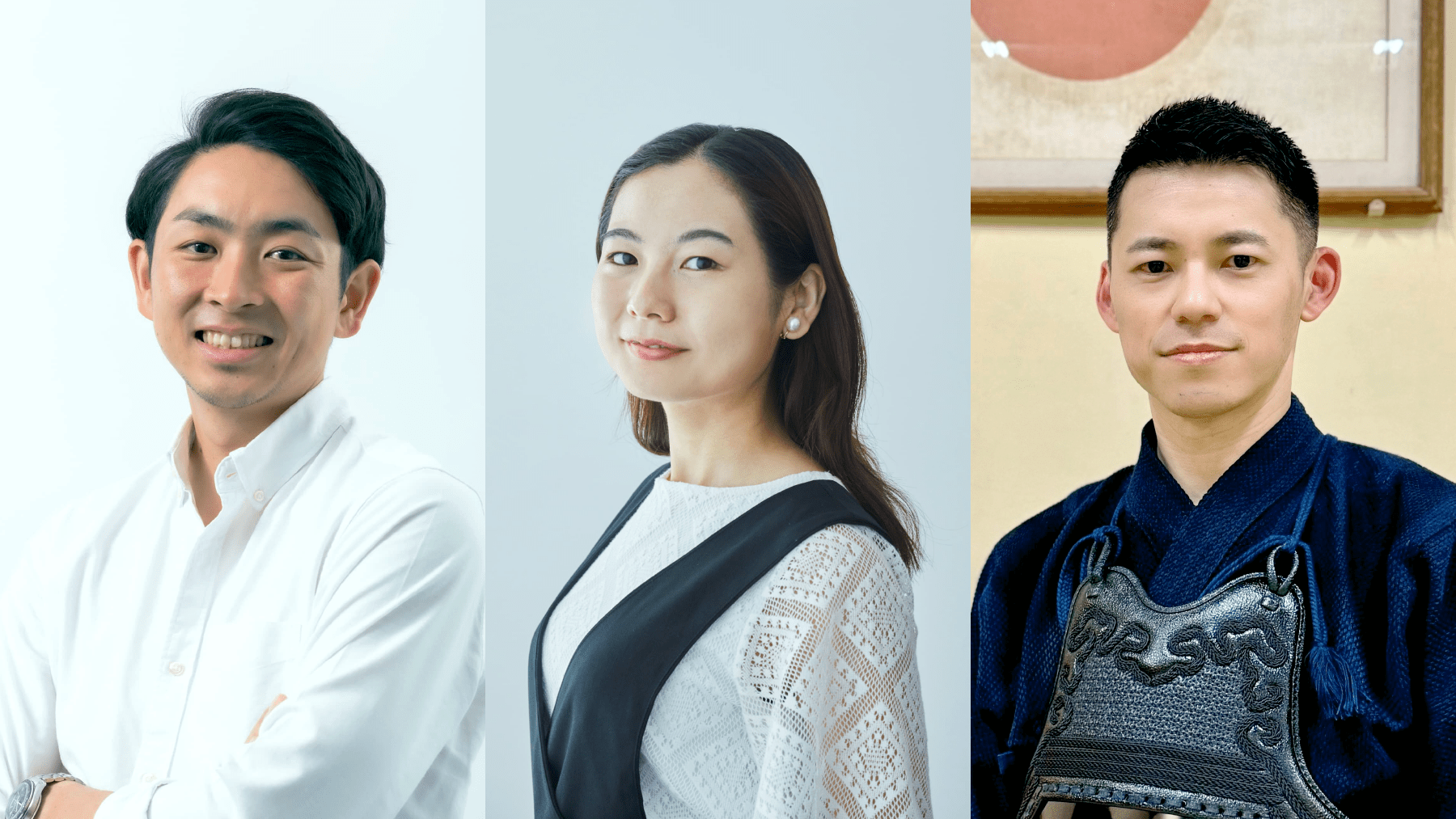

.png?h=720&iar=0&w=1280&sc_lang=en)
